Have you recently brought home a new puppy? If so, congratulations! As you puppy-proof your home and settle the new addition to your family, there are many things to consider. One of which is how big and heavy your dog should be. Many factors go into determining how big a dog should be, and in this article, we aim to help you answer the question. Is your dog the ideal size? Let's find out.
Suppose you live in an apartment. In that case, you probably won't want an excessively heavy or oversized dog. But if you're lucky enough to have a big yard, you may want a pup that will be able to cover the space. While there is no such thing as an average dog size, there is such a thing as canine obesity. Be sure to keep an eye on your pup's weight because a happy dog is a healthy dog.
How Heavy Should My Dog Be?
This is difficult to answer because it's impossible to precisely identify an average weight for all dogs since our canine companions can come in so many different shapes and sizes. In addition, the dog's sex and whether they've been spayed/neutered may also factor into a dog's weight.
Although there are many resources that provide an average weight range for various dog breeds, these ranges often fail to take the dog's sex and other factors into consideration. For example, 55 to 80 pounds is the typical weight range you might see for a Labrador Retriever. (See, that's a big range!) Most female Labs would fall on the lower end of that range.
Average weight ranges also tend not to account for the hundreds of mixed-breed dogs out there. Just because Labs typically range from 55 to 80 lbs doesn't mean you should expect your Lab to fall within that range. It depends on whatever other breeds they happen to be mixed with.
So, what are you supposed to do if you don't know your dog's breed makeup? What happens then? Most resources will have you use the dominant breed, but it's still a guessing game. The idea of an average dog weight simply won't work when it comes to mixed breeds.
A Better Way to Determine Healthy Dog Weight
Rather than going off some average weight range, which can be wildly inaccurate, veterinarians and animal healthcare professionals tend to use a Body Condition System (BCS). With this system, your vet can use visual and physical observations of your dog to assess their current body condition and whether they are overweight or underweight relative to their breed, gender, and age.
How to Tell if Your Dog is Overweight
Most people turn to resources from the internet for an average dog weight or a range. But because all dogs are different, it's never that simple. Dog breeds can have significant and varying weight ranges, and they usually vary from male to females. Plus, things get even more complicated if you have a mixed breed.
The Body Condition System (BCS) was developed for veterinarians to help eliminate confusion regarding assessing a dog's weight. The BCS is a nine-point scale that can help your vet assess your dog's body condition and the severity of their weight issues.
Check Your Dog's Body Shape
One of the easiest ways to tell if your dog is overweight is to look at the body shape. Try looking at your dog from above, and if you notice that your sweet pup looks particularly oval-shaped, your dog is likely overweight.
On the other hand, if you happen to notice that your dog has a straight build down the sides and a defined waist toward the rear, then it is safe to say that they're probably at a healthy weight.
Weigh Your Dog
The best and most straightforward way to tell if your dog is obese or overweight is to have them weighed at your local vet. After weighing your four-legged friend, your vet should then be able to tell you whether your dog is overweight relative to your dog's breed and size. (Remember, a healthy weight will look different for every breed).
When you take your dog in, the vet will also examine their body and compare it to a body condition score chart. This chart ranks a dog's body type by shape. Typically, scores will range from one to nine, with one being dangerously underweight and nine being significantly overweight. The ideal body condition typically lies somewhere between four and six.
Feel for Your Dog's Ribs
The prominence and feel of your dog's ribs can be a significant indicator of weight issues. If you can feel your sweet pup's ribs without having to press hard and their ribs aren't highly prominent, then your pup is probably fit. However, it can be challenging to an overweight dog's ribs because typically, there is too much fat in the way.
Look at Your Dog From the Side
A swinging stomach or sagging waist can be another tell-tale sign of an overweight dog. When viewing your dog from the side, you want their waist to be slightly raised rather than oval-shaped and droopy. A dog's abdomen should be tucked in, not hanging at the same level as the chest.
Examine Your Dog's Behavior
Obese and overweight dogs are generally inactive and tend to spend a lot of time inhaling their food. Only a veterinarian should be trusted to know your dog’s behaviors as well as you do. If you notice that your pup has trouble walking or generally appears to struggle to move about, has become a bit of a couch potato, exhibits difficulty breathing when walking, they might be overweight. Also, free-choice feeding throughout the day can encourage obesity in your dog.
Can Being Heavy or Overweight Impact a Dog's Health?
Yes! Obesity can potentially shorten a dog's lifespan and make them more susceptible to disease. The scientific community has always accepted that heavy dogs tend to live shorter lives than lean dogs, typically by 6-12 months. But a large, lifetime study of Labrador Retrievers has uncovered a sobering statistic; being even moderately overweight may potentially reduce a dog's life expectancy by as much as two years in comparison to their leaner counterparts.
Fat was once thought to be a relatively inactive tissue, simply adding to body mass and storing excess energy calories. However, recent evidence suggests that fat tissue is more biologically active than initially believed. Fat tissue is said to create stress on the body's tissue and secrete inflammatory hormones, both of which can contribute to various diseases. All pet owners should consider the new approach of thinking of obesity as a chronic, low-level inflammatory condition.
Obese and Overweight Dogs Develop an Increased Risk For:
- Anesthetic Complications (as overweight dogs are less heat tolerant)
- Urinary Bladder Stones
- Diabetes
- Heart Disease
- Hypertension
- Arthritis and faster degeneration of affected joints
While obesity puts dogs at risk for various conditions and diseases, it can indicate certain conditions as well. One potential condition that can cause obesity is Cushing's disease, caused by overactive adrenal glands. Another might be hypothyroidism, typically caused by an underactive thyroid gland.
What Can I Do To Help My Dog Gain Weight?
Most of the information you'll find online about keeping dogs at a healthy weight is written to prevent your dog from gaining weight or becoming obese. And while this is very important, it is not the only weight-related issue that dogs face.
What should you do if your pup is underweight? Feeding a dog more will obviously help them put on weight, but how do you do this in a safe and effective way? If you find that your little canine companion needs to put on a few pounds, read on below for a handful of tips and tricks to help them do this safely and effectively.
Choose a Higher Calorie Food
Select foods higher in protein and calories (similar to what you would feed a canine athlete.) For a dog that isn't particularly active, this kind of food will help them put on some much-needed weight.
Consider Trying CBD
Puppy Parents that suspect their pup isn't eating enough due to nervousness, discomfort, or stress may want to consider looking into the various CBD options out on the market for dogs.
Cannabidiol (CBD) interacts with a naturally occurring system found in all mammals (called the endocannabinoid system or the ECS) responsible for managing pain, mood, appetite, and lots more.
Because of this interaction with the ECS, CBD has developed quite the reputation for promoting natural hunger and easing nervous tension and discomfort. While there are many CBD products for dogs available on the market today, when it comes to quality, Holistapet's are top-notch. Below we have provided a short list containing a few CBD products that may help to stimulate your pup's appetite:
Supplement Meals With Snacks
Puppy Parents with underweight pooches may want to consider adding some supplemental food made with meat sources like bison (high in fat and protein) to their pup's routine feeding. These foods are typically canned and will likely be labeled as being "for supplemental feeding only."
Supplemental canned foods should never replace a balanced formula when it comes to feeding your dog. You may also want to have a conversation with your vet about giving your pup vitamins or other supplements to help keep them healthy.
Consider Free-Feeding or Try Small Meals Throughout the Day
Feeding your pup little snacks and mini-meals throughout the day will give them more opportunities to eat and consume more calories. Because it can lead to weight gain and obesity, free-feeding is generally not recommended. But since that is your goal, it is okay to free-feed your dog in moderation to help them put on a few pounds.
Use Wet or Fresh Food
All dogs love the smell of fresh food! These foods are more appealing for your pup because they have a stronger scent than dry food. You may want to consider wet or fresh food if you notice that kibble is not appealing to your canine companion.
One note on food safety: If you have chosen to free feed your pup, be sure to carefully follow any food safety guidelines on the container so that your pup's food doesn't spoil. The majority of fresh and wet foods require refrigeration after opening. If your pup seems to be equally disinterested in cold food as they are with kibble, perhaps consider switching to a formula that they can eat warm like a little bowl of stew.
What Can I Do To Help My Dog Maintain Weight?
The first step when it comes to managing your dog's weight is keeping track of how much you feed them. Always be sure to measure their food before every meal. This way, you will always know how much you need to feed them in order to reduce their overall intake. Ensure to keep track of treats and snacks and reduce how often you give those out when it is time for your dog to go on a diet.
Final Thoughts - How Heavy Should My Dog Be?
We know that you care for your dogs and only want the best for their health, which is why it's crucial that you make sure that they stay at a proper and healthy weight for their breed. There is no accurate average weight because there are no average dogs.
So, how heavy should your dog be? Well, the answer isn't as straightforward as you might think. Every dog is unique, and ideal weight will vary based on a handful of factors. If you are curious about how heavy your dog should be, you can use a dog weight chart by breed and age. You could also use a dog weight estimation equation to help you find your answer. We hope with this information you can keep your dog healthy and happy all year round!

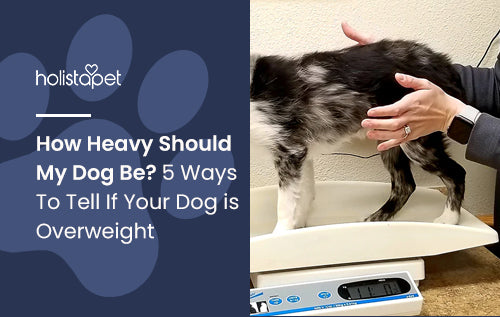
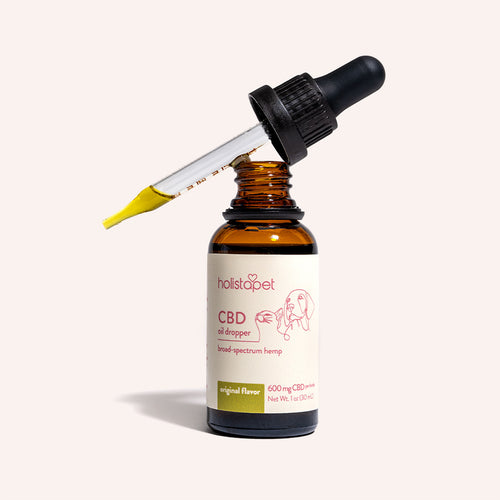 CBD Oil for Dogs - Fast Acting
CBD Oil for Dogs - Fast Acting
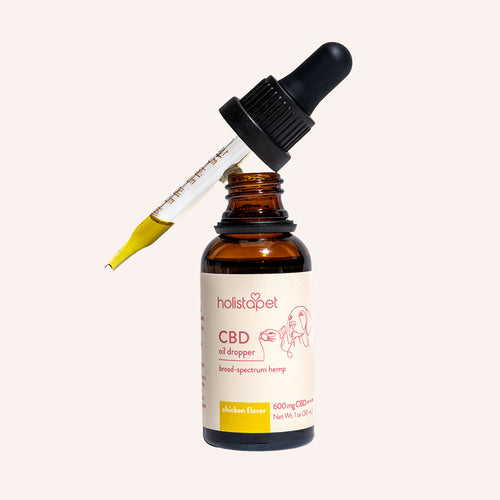 Chicken Flavored CBD Oil For Dogs - Easy Dose
Chicken Flavored CBD Oil For Dogs - Easy Dose
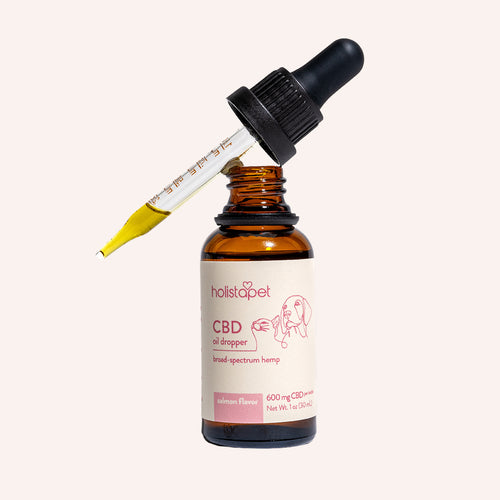 Salmon Flavored CBD Oil For Dogs - Highly Rated
Salmon Flavored CBD Oil For Dogs - Highly Rated
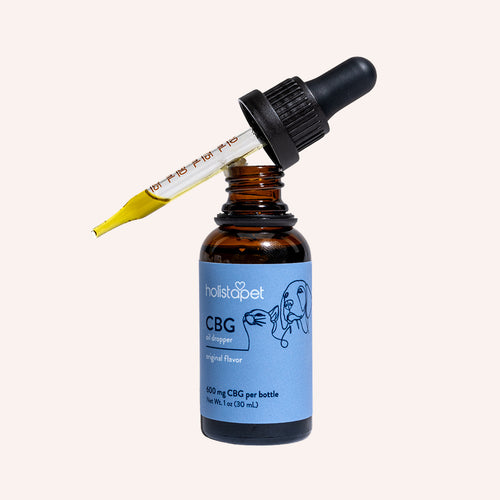 CBG Oil for Dogs and Cats - Loved by Thousands
CBG Oil for Dogs and Cats - Loved by Thousands





Leave a comment
All comments are moderated before being published.
This site is protected by hCaptcha and the hCaptcha Privacy Policy and Terms of Service apply.